Bounded by the Atlantic Ocean on the east, Brazil has a coastline of over 7,367 kilometres (4577 miles). Brazil borders every nation on the South American continent except Ecuador and Chile. Venezuela, Suriname, Guyana and the department of French Guiana are to the north, Colombia to the northwest, Bolivia and Peru to the west, Argentina and Paraguay to the southwest, and Uruguay to the south. Numerous archipelagos are part of the Brazilian territory, such as Penedos de São Pedro e São Paulo, Fernando de Noronha, Trindade and Martim Vaz and Atol das Rocas.
Brazil is crossed by both the Equator and Tropic of Capricorn, and as such is home to a vast array of flora and fauna, natural environments, and extensive natural resources. Its region within the tropics is, by far, the largest of any country; about twice as large as that of Australia. The Brazilian population is concentrated along the coastline and in a few large urban centers in the interior. While Brazil is one of the most populous nations in the world, population density drops dramatically as one moves inland.
Brazil was a colony of Portugal from the landing of Pedro Álvares Cabral in 1500 until its independence in 1822. Initially independent as the Brazilian Empire, the country has been a republic since 1889, although the bicameral legislature (now called Congress) dates back to 1824, when the first constitution was ratified. Its current Constitution defines Brazil as a Federal Republic. The Federation is formed by the union of the States, the Federal District, and the Municipalities. There are currently 26 States and 5,564 Municipalities.
One of the ten largest economies in the world, the country has a diversified middle-income economy with wide variations in development levels and mature manufacturing, mining and agriculture sectors. Technology and services also play an important role and are growing rapidly. Brazil is a net exporter, having gone through free trade and privatization reforms in the 1990s.
TOP 5 THING TO KNOW ABOUT BRAZIL
Capoeira is a Brazilian blend of martial art, game, and dance originated in Brazil, from the regions known as Bahia, Pernambuco, Rio de Janeiro, Minas Gerais and Sao Paulo. The art-form started up in Brazil during the 16th Century, an obvious result of the slave trading that took place in conjunction with the previously slaved native indians. Capoeira was created and developed by both the native slave Indians in Brazil and slaves brought from Africa. Participants form a roda (circle) and take turns playing instruments, singing, and sparring in pairs in the center of the circle. The game is marked by fluid acrobatic play, feints, and extensive use of groundwork, as well as sweeps, kicks, and headbutts. Less frequently-used techniques include elbow-strikes, slaps, punches, and body-throws.
maybe you are familiar with this video game characters who's using this technique

Eddy's father was working to destroy the drug cartel in Brazil. His untimely death occurred just when he had obtained enough evidence to put the kingpins away for good. In his last breaths, Eddy's father told him, "Now is not the right time to fight. Falsely admit to the crime and hide in prison. Only there will you be safe". Eddy went along with his father's last wish and the model student went from a life of luxury to incarceration as a murderer.
Prison life was hell and not a day went by that Eddy didn't vow to get even with his father's killers. One day during a prison riot he watched an old man with great power fighting using a technique he called Capoeira. For 8 years Eddy practiced until he became a master and could be considered a lethal weapon.
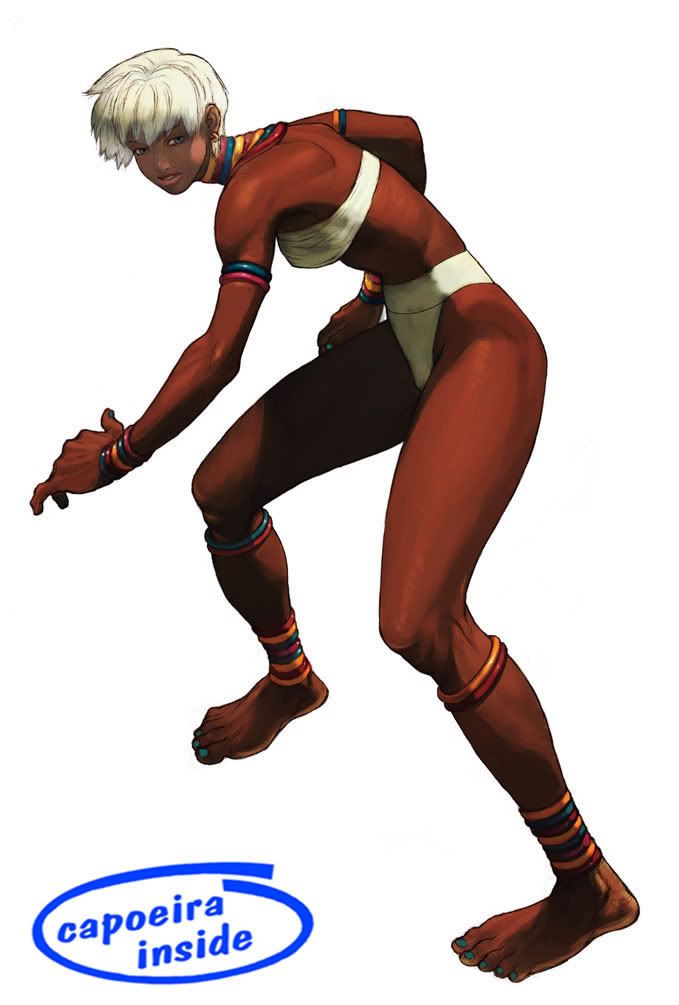
Elena is a character in the Street Fighter series.
Elena is a princess in an African tribe that has a cultural tradition of fighting, making her a warrior princess. She may have been born in Kenya, but her fighting style is Capoeira which utilizes her strong, long legs with dance-like moves and fancy legwork. Her father, the tribe's chief, is a witch doctor. However, he also has a PhD in medicine obtained from a French university. Elena's views of fighting and martial arts differ from most due to her light hearted personality allowing her to befriend some people and annoy others. She wants to travel around the world, meeting new friends along the way. She studied as an exchange student in Japan, where she met her best friend Narumi. She later continued those studies in France.
Elena's voice actress speaks English with a Japanese-Australian accent, despite the character being Kenyan. Elena often greets her opponent at the beginning of a match with "Jambo!", Swahili for hello. Her multi-colored bangles were a good showcase of Capcom's new hardware; CPS-3. The earlier CPS-2 allowed each sprite to be colored from a paletTOP 4 THING TO KNOW ABOUT BRAZIL
"THE HAVAIANAS"

Havaianas (Brazilian Portuguese: [ˌavɐiˈjʌnɐs], usually pronounced by Americans as: [ˌhaviˈanəz].) is a Brazilian sandal brand (also known as flip-flops, thongs or jandals) that is exported internationally, for example, being featured at several stores in the United States and the Philippines. Since their creation in 1962, more than two billion pairs have been manufactured.
The flip-flop is originally a New Zealand invention, inspired by the Japanese rice straw and wood zori sandals used with kimono. Havaianas follow the original simple, functional design and sometimes feature a small symbol such as the Brazilian flag on the strap. The name Havaianas is Portuguese for Hawaiians.
There are several types of Havaianas, ranging from the traditional flat-heeled model to platforms.
Havaianas are produced by São Paulo Alpargatas SA. In its plant, located in the city of Campina Grande, five pairs of sandals per second are produced, generating an annual production of 105 million pairs.
TOP 3 THING TO KNOW ABOUT BRAZIL
"SOCCER FEVER"
As they say, Americans invented it but the Brazilians perfected it!!
i will give 2 of the legendary football player in brazil
"RONALDO"

Ronaldo Luis Nazário de Lima , is a Brazilian professional footballer who plays as a striker for the Italian Serie A club AC Milan. He has been nicknamed "The Phenomenon" (Portuguese: O Fenômeno, Spanish: El Fenómeno). Pelé named him one of the 125 greatest living footballers in March 2004. In 2007 France Football named him in their best starting 11 of all time.
Ronaldo has enjoyed success at the international level, winning the 1994 and 2002 FIFA World Cups with Brazil. Ronaldo has won three FIFA World Player of the Year awards (1996, 1997, 2002). He and former Real Madrid teammate Zinedine Zidane are the only two men to have won the award three times.
"Pelé"
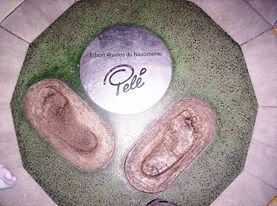

Edison Arantes do Nascimento, KBE (born October 23, 1940 in Três Corações, Brazil), best known by his nickname Pelé, is a former Brazilian football player, rated by many as the greatest footballer of all time. He was given the title of Athlete of the Century by the International Olympic Committee.
In his native Brazil, Pelé is hailed as a national hero. He is known for his accomplishments and contribution to the game, in addition to being officially declared the football ambassador of the world by FIFA and a national treasure by the Brazilian government. He is also acknowledged for his vocal support of policies to improve the social conditions of the poor (when he scored his 1,000th goal he dedicated it to the poor children of Brazil). During his career, he became known as "The King of Football" (O Rei do Futebol), "The King Pelé" (O Rei Pelé) or simply "The King" (O Rei). He is also a member of the American National Soccer Hall of FameTOP 2 THING TO KNOW ABOUT BRAZIL
"THE SUGAR LOAF MOUNTAIN"
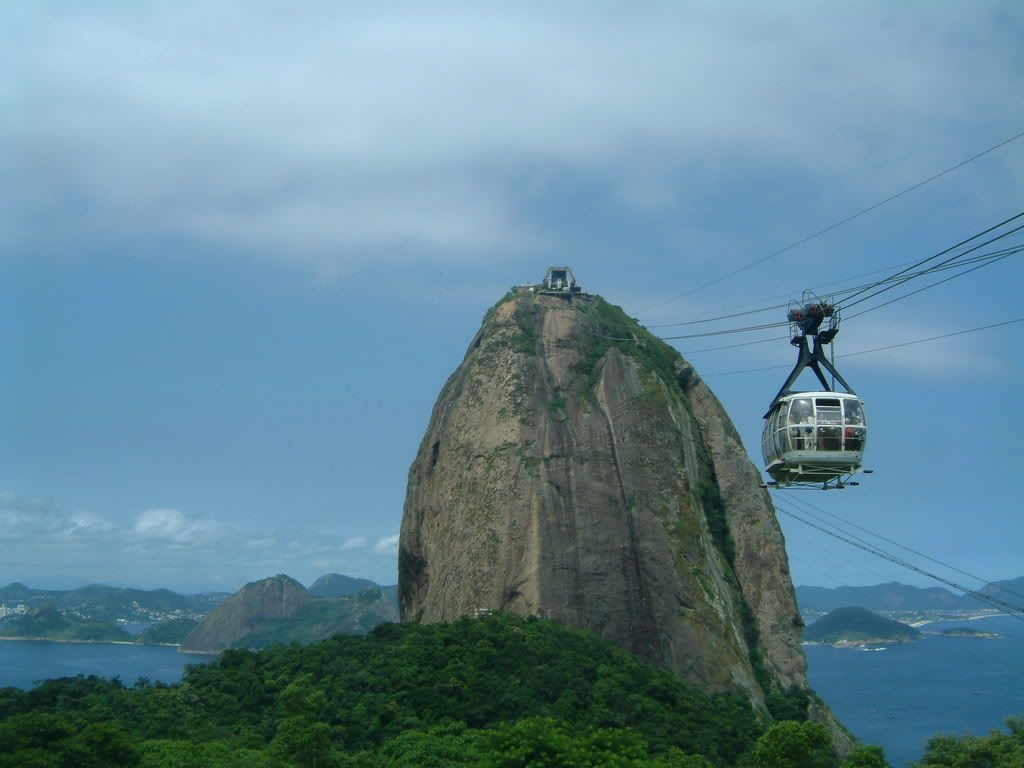
Sugarloaf Mountain (1,299 , is a peak situated in Rio de Janeiro, Brazil, from the mouth of Guanabara Bay on a peninsula that sticks out into the Atlantic Ocean. Rising 396 metresft) above sea-level, its name is said to refer to its resemblance to the traditional shape of concentrated refined loaf sugar. However, it is believed by some that the name actually derives from Pau-nh-acuqua (“high hill”) in the Tupi-Guarani language, as used by the indigenous Tamoios.
The mountain is only one of several monolithic morros of granite and quartz that rise straight from the water's edge around Rio de Janeiro. A glass-paneled cable car (in popular Portuguese, bondinho - more properly called teleférico), capable of holding 75 passengers, runs along a 1400-metre route between the peaks of Babilônia and Urca every half hour. The original cable car line was built in 1912. So familiar is this peak, the mere sight of it in a film is sufficient to establish the setting as Rio.
Visitors can watch rock climbers on Sugarloaf and the other two mountains in the area: Morro da Babilônia (Babilon Mountain), and Morro da Urca (Urca's Mountain). Together, they form one of the largest urban climbing areas in the world, with more than 270 routes, between 1 and 10 pitched long. Some classic routes in Sugarloaf are:
- Italianos, 5.10a, 2 pitches. Beautiful and well protected face climbing. Can be connected to other routes, in a total of 6 pitches to the top.
- Stop Chimney, 5.6, 7 pitches. Classic runout but easy chimney.
- Lagartão, 5.11c, 7 pitches. First two pitches are traditional climbing, the rest is bolted.
- Ibis, 5.10d A1, 10 pitches. Runout and committed. Some parties climb it in two days, sleeping on one of the ledges in the first half of the route.\
THE MOST WONDERFUL THING TO KNOW ABOUT BRAZIL
"CHRIST THE REDEEMER"
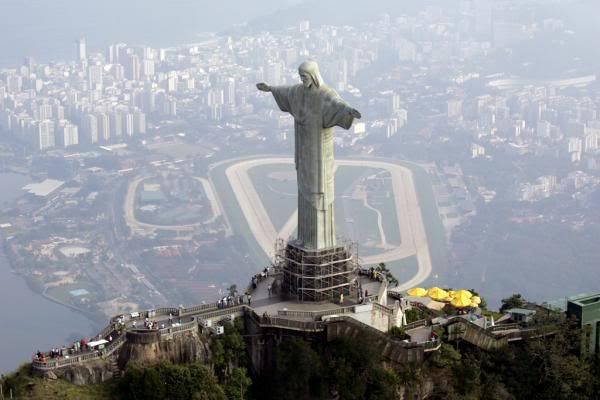
Christ the Redeemer (Portuguese: O Cristo Redentor), is a statue of Jesus Christ in Rio de Janeiro, Brazil. The statue stands 39.6 metres (130 feet tall) weighs 700 tons, and is located at the peak of the 700 m (2,296 ft) Corcovado mountain in the Tijuca Forest National Park overlooking the city.
A symbol of Christianity, the statue has become an icon of Rio and Brazil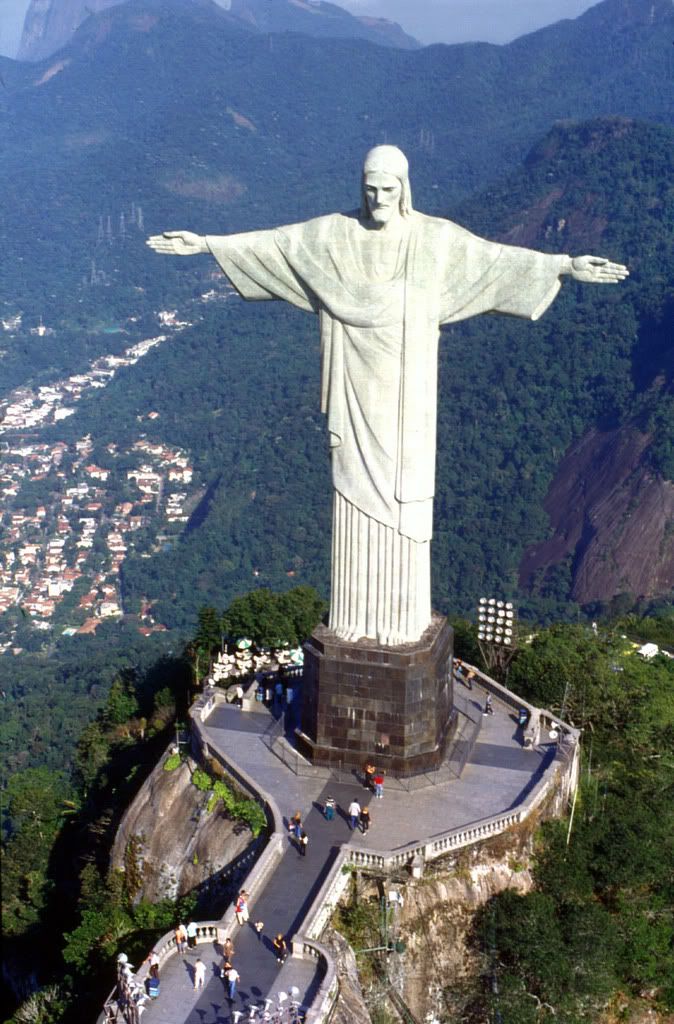
The idea for erecting a large statue atop Corcovado had been around since mid 1850s, when Catholic priest Pedro Maria Boss requested financing from Princess Isabel to build a large religious monument. Princess Isabel did not think much of the idea, which was completely dismissed in 1889, when Brazil became a Republic, with laws mandating the separation of church and state.[5]
The second proposal for a large landmark statue on the mountain was made in 1921 by the Archdiocese of Rio de Janeiro.[citation needed] The archdiocese organized an event called Semana do Monumento ("Monument Week") to attract donations. The donations came mostly from Brazilian Catholics.[1] The designs considered for the "Statue of the Christ" included a representation of the Christian cross, a statue of Jesus with a globe in his hands, and a pedestal symbolizing the world.[citation needed] The statue of Christ the Redeemer with open arms was chosen.
Local engineer Heitor da Silva Costa designed the statue; it was sculpted by Paul Landowski, a French monument sculptor of Polish origin. A group of engineers and technicians studied Landowski's submissions and the decision was made to build the structure out of reinforced concrete (designed by Albert Caquot) instead of steel, more suitable for the cross-shaped statue. The outer layers are soapstone, chosen for its enduring qualities and ease of use. Construction took nine years — from 1922 to 1931 and the monument was opened on October 12, 1931. The cost of the monument was $250,000, and the statue was lit by a battery of floodlights triggered remotely by shortwave radio pioneer Guglielmo Marconi, stationed 5,700 miles (9,200 km) away in Rome.
The statue was struck by lightning during a violent electrical storm on Sunday, February 10, 2008 which caused havoc in Rio, felling trees in several neighbourhoods, but the statue itself remained unharmed.n October 2006, on the statue's 75th anniversary, Archbishop of Rio Cardinal Eusebio Oscar Scheid consecrated a chapel (named for the patron saint of Brazil - Nossa Senhora Aparecida) under the statue. This allows Catholics to hold baptisms and weddings there.
As of 7 July 2007, Christ the Redeemer was named one of the New Seven Wonders of the World in a list compiled by the Swiss-based The New Open World Corporation. In Brazil there was a campaign Vote no Cristo (Vote for the Christ) which had the support of private companies, namely telecommunications operators that stopped charging voters to make telephone calls to vote. Additionally, leading corporate sponsors including Banco Bradesco and Rede Globo spent "millions" of dollars in the effort to have the statue voted into the top seven.






